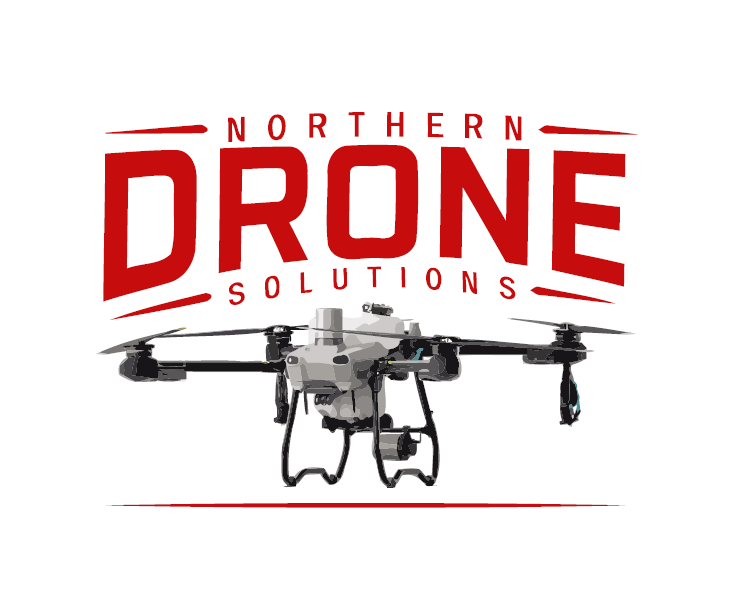
Increasing Your Yield
Studies indicate that drone spraying can increase your yield as much as 10% or more. Higher yields directly contribute to more profitability. Drone applications offer several advantages over traditional spraying methods. Drones provide precision application, reducing chemical usage and minimizing the environmental impact. They are more efficient, covering large areas quickly while reducing labor cost. Drones also minimize soil compaction and offer better access to difficult or hard to reach terrains especially during a wet season.
Using drones for field applications offers numerous advantages. First, drones provide precise application of fertilizers, pesticides, or herbicides, targeting specific areas and reducing waste. This precision minimizes the environmental impact, as chemicals are used only where needed, preventing runoff and damage to surrounding ecosystems. Drones also save time and labor by covering large areas quickly and efficiently, especially in fields that are difficult to access with traditional machinery. Additionally, drones can operate in various weather conditions and terrains, increasing flexibility and reducing downtime. The ability for immediate adjustments, ensuring optimal application and improved crop health. Finally, drones reduce the risk of human exposure to chemicals, enhancing safety in agricultural operations.
Using aerial drones for Christmas tree farms and forestry applications offers numerous advantages. Drones provide precise application of fertilizers, pesticides, and herbicides, ensuring that treatments are applied only where needed, which reduces chemical waste and environmental impact. They can easily navigate the dense and varied terrain of tree farms and forests, accessing areas that are difficult or impossible for traditional machinery to reach. This capability speeds up the treatment process and reduces labor costs. This technology enhances efficiency, reduces costs, and supports sustainable practices in both Christmas tree farming and forestry management.
Using drones for treating ponds offers several key advantages. They enable precise application of treatments like algaecides or herbicides, ensuring even distribution while minimizing chemical use and environmental impact. Drones can access hard-to-reach areas of ponds that traditional methods might miss, improving coverage and effectiveness. This method is also time-efficient, allowing for quick treatment of large or multiple ponds. Additionally, drones reduce the need for manual labor and heavy equipment, lowering operational costs and minimizing disruption to the pond’s ecosystem. Overall, drones provide a safer, more efficient, and environmentally friendly approach to pond management.
Utilizing drones for orchard applications offers significant advantages with precision accuracy. Drones can efficiently apply fertilizers, pesticides, and other treatments with pinpoint accuracy, targeting specific areas within the orchard and reducing waste. This precision not only minimizes chemical use but also helps protect surrounding ecosystems and improves crop quality. Drones can navigate through tight spaces and uneven terrain, reaching areas that are difficult for traditional equipment to access. They also save time and labor, quickly covering large orchards while reducing the need for manual spraying.
Using drones for specialty crops such as cabbage, potatos, soybeans, and other simuliar crops provides significant advantages in precision agriculture. Drones enable targeted application of fertilizers, pesticides, and herbicides, reducing chemical use and minimizing environmental impact. They can efficiently cover large fields with varied crop types, ensuring even distribution and reaching areas that may be difficult for traditional machinery to access. This technology enhances efficiency, reduces labor costs, and supports sustainable farming practices, making it ideal for all your application needs.
Using drones on golf courses or sod farms offers several key advantages in maintenance and management. Drones provide precise application of fertilizers, pesticides, and herbicides, ensuring that treatments are accurately targeted, reducing chemical usage and environmental impact. They can quickly cover large areas, including difficult-to-reach spots, enhancing the efficiency of course maintenance. Additionally, the use of drones reduces labor and the use of machinery, minimizing disruption to the course and preserving its aesthetic appeal. Overall, drones contribute to more efficient, sustainable, and cost-effective golf course management. The use of drones can reduce your labor cost by 50% of more.
Drone spraying offers versatile applications. Drones enable targeted spraying of fertilizers, pesticides, and herbicides, reducing chemical usage and minimizing environmental impact. They can quickly cover large and uneven terrains, ensuring even application and reaching areas inaccessible to traditional machinery. In forestry, drones can apply treatments to manage pests and diseases, or assist in reforestation efforts by dispersing seeds in hard-to-reach areas. Overall, drone spraying can be used for a variety of applications to enhances efficiency, reduces costs, and supports sustainable practices across multiple sectors.
"Journal of Precision Agriculture" found that drone spraying significantly increased precision and efficiency of applications, reducing chemical use by up to 30% compared to ground spraying
A study by the "American Society of Agronomy" reported that drone spraying minimized chemical drift and reduced environmental contamination, highlighting the potentials for a more sustainable practices.
According to research by the "International Journal of Agriculture and Biological Engineering", drone spraying reduced labor cost and operational cost by up to 40%, making it a cost effective alternative to ground spraying.
A study conducted by the "University of Nebraska" reported an increase in yield by 10-12% with drone applications.
Dr. Bruce Erickson, Agronomist at Purdue University: "Drones offer a unique perspective in farming. This technology is pivotal in reducing waste and increasing efficiency on the farm"

Efficiency:
Drones can cover areas more quickly compared to ground equipment, reducing the time required for spraying operations. This efficiency leads to faster turnarounds and the ability to treat more fields in a shorter time frame.

Chemical Use:
Drones apply chemicals more precisely and efficiently, reducing the amount of chemicals needed. This precision reduces waste and lowers your overall cost of pesticides, herbicides and fertilizers.

Reduced Labor:
By automating tasks such as aerial seeding, applications and targeted spraying, drones require fewer personnel compared to ground-based equipment. This leads to savings in wages and other operational costs.
Discover Our Cutting-Edge Drone Solutions
Unlock the full potential with Northern Drone Solutions. Our advanced drone technology offers unparalleled efficiency and precision. Visit our products and services page to learn more about how our drones can transform your application practices.
